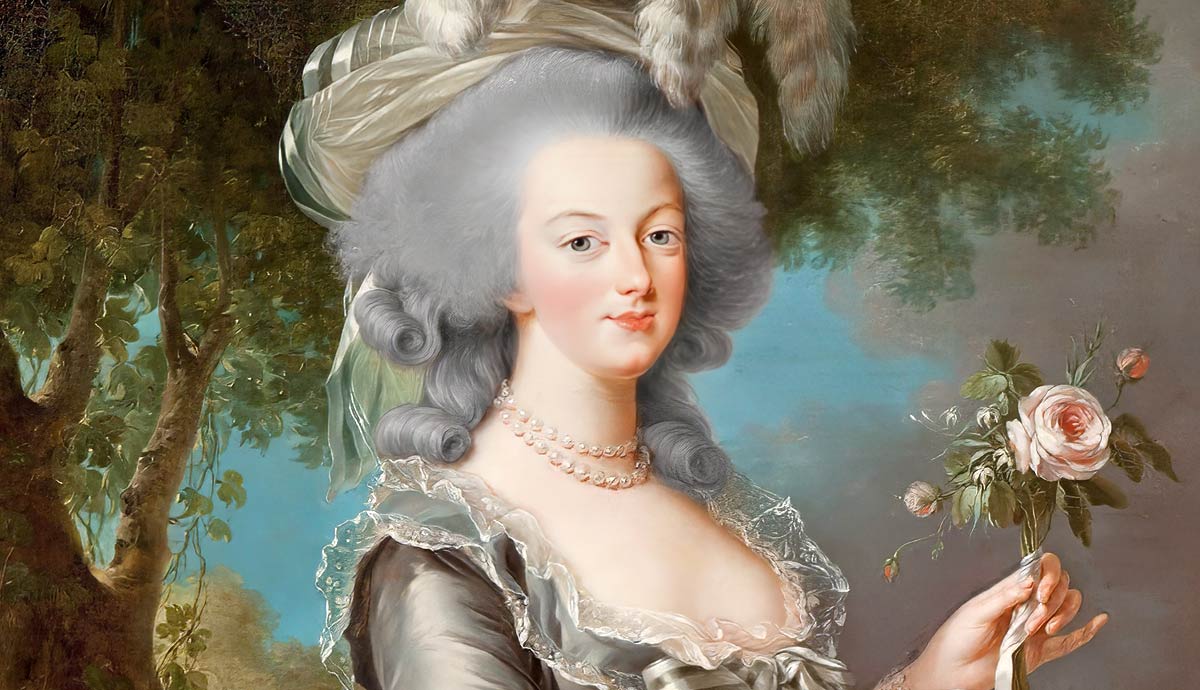
Marie Antoinette Syndrome, also known as ‘Canities Subita’ is a ghostly, rare phenomenon in which the sufferer’s head or body hair suddenly and dramatically turns white over a short period of time. Named after the French Queen whose own hair reportedly turn white overnight following a series of traumatic experiences, the response was historically attributed to extreme shock, grief or distress. Today many doctors are largely skeptical that this could cause such an extreme reaction to one’s hair color. Instead, other medical causes have been examined over the centuries. However, the condition appears very much real for the 84 people who have experienced sudden whitening hair since 1800. We take a closer look at this rare and unexplainable condition.
It Was Named After Marie Antoinette

While earlier supposed cases of ‘Canities Subita’ exist from history, the most publicized is in the case of French Queen Marie Antoinette. As the legend goes, the queen’s natural hair (which usually hid under all those elaborate, powdered wigs) turned white the night before her execution by guillotine in 1793, when she was just 35 years old. She was caught by revolutionaries in Varennes following her failed attempt to escape from Paris disguised as a governess, alongside King Louis XVI, who was dressed as a valet, and from this point on, she must have known a cruel fate lay before her.

One of the last people to see Marie Antoinette alive was the queen’s lady in waiting, Henriette Campman, who observed in a written account, “The first time I saw her majesty after the unfortunate catastrophe of the Varennes journey… her features were not very much altered; but after the first kind words she uttered to me she took off her cap and desired me to observe the effect which grief had produced upon her hair.” The queen then revealed a ring which contained a lock of white hair inside, along with the inscription “blanched by sorrow.”
History Contains Several Case Examples

Historical accounts of Marie Antoinette Syndrome have been reported since at least the 16th century, each time attributing the condition to extreme hardship or stress. Interestingly, age does not seem to be a determining factor, with people of all ages being affected. One of the earliest was Mary Queen of Scots, whose white hair was reportedly revealed to a crowd after her execution. History tells us Sir Thomas More suffered a similar fate when his hair allegedly turned white before his own execution in England.

More recently, in a report from 1902, one 22-year-old woman’s right side of pubic hair turned white overnight after she witnessed a gruesome murder. Meanwhile in 1915, a 23-year-old French soldier who survived an explosion suffered, not long after the incident, white tufts appearing only on the left side of his head, echoing the side of his body that had been most impacted during the blast. In both these cases and more, the hair remained white.
Many Doctors Remain Skeptical

Today doctors largely tend to view Marie Antoinette Syndrome as a myth, despite the occasional sufferer appearing in medical studies. Many are quick to point out that the hair on head is already not alive, so it is less likely to be directly affected by stress. This argument points out any stress-related greying of the hair would happen gradually over time, rather than as an immediate reaction to trauma. Cynics have argued that it was historians who peddled the case studies of Marie Antoinette Syndrome that are so famous today, and that there may well have been other causes that led to the appearance of sudden hair whitening.

Did the hair of Mary Queen of Scots, and Marie Antoinette change color because they had no access to hair dye in prison? Or perhaps, as many scientists have argued, at least some of the sudden hair whitening cases in history were caused by a condition called alopecia areata, when only the pigmented hair falls out, leaving the white hair behind. However, this would be a temporary change until the pigmented hair grew back, which doesn’t explain why so many case studies retained their white hair permanently.
Other health issues such as vitamin deficiencies or coeliac disease can cause temporary hair whitening, but these are also often temporary. Meanwhile some make a connection between whitening hair and the skin vitiligo, even though many Marie Antoinette Syndrome Sufferers claim to have never experienced skin whitening. All this means the jury is still out, and for now, at least, the syndrome remains one of the world’s unsolved mysteries.










